September 5, 2025 • 25 min read
What is a Customer Data Platform (CDP)? Complete Guide

Content Writer
September 5, 2025

Companies who employed a CDP have been shown to exhibit top-tier levels of satisfaction while meeting their business goals over the past 12 months at a staggering 89%, compared to those operating without a CDP (60%).[*] The studies don't lie, it's clear the satisfaction gap shows that arming your company with unified customer data leads to better business outcomes.
What Is a Customer Data Platform (CDP)?
Customer Data Platforms (CDP) are the central nodes of your customer data operations; they make sure that information from all the touchpoints is connected and sorted into comprehensible customer profiles. They distinguish themselves from your traditional data solitons that tend to work solo and sometimes create data silos. CDPs tear apart your data silos to create an authoritative center for customer information knowledge.
CDPs handle both your structured and unstructured data to varying degrees. Structured data means your purchase history and demographic data, whereas unstructured data encompasses social media interactions and email queries. Fusion of both leads to a birds-eye view of your customers' interactions across all channels in real time.
How Customer Data Platforms Work
There are three major processes that inherently guide and form how your CDP will work: these are data collection, unification, and activation. Below, we’ll take a look at each one and how they work in tandem.
Data Collection
CDPs begin by aggregating first-party data from primary zones, including how customers interact with your website and mobile apps, their engagement with emails, social activities, and sales system recordings. They will even parse through IoT device interactions (think Alexa from Amazon). All this data creates the basis of a unified customer understanding.
These platforms ingest your structured and unstructured data instantly, while handling batch processing to identify trends in your historical data. A dual approach leaves no stone unturned and no customer interaction (online or offline) untracked.
Data Unification
Your next step within the CDP process is taking in raw data, which comes in naturally different formats due to different sources, and cleansing them while implementing standardization. CDPs will take disparate information and turn it into concise and usable formats that can actually be analyzed and used in formulating your processes.
This is the part where the CDPO will create a persistent but unified set of customer profiles through resolving “who is who” and “what is what" via devices and your existing channels. These profiles are updated with each and every interaction to ensure that you do not fly blind in the face of changing and evolving behavior.
Data Activation
Last but not least, we have activation where the unified data starts to make its way to all of your service, sales, and marketing systems via APIs and integrations with their existing tools like CRMs or ticketing software. This level of accessibility and transparency will enable real-time personalizing, where you can act on customer actions as they occur.
Your CDP will now power cross-channel campaign orchestrations while working to feed your existing and future Artificial Intelligence (AI) and Machine Learning (ML) modeling systems when it comes time to create predictive insights. Marketing teams get the ability to target and hone campaigns to specific customers, while your sales team gets access to every customer interaction they can to better their strategy.
CDP vs. Other Data Solutions
Understanding how CDPs differ from other data solutions helps clarify their unique value proposition and optimal use cases.
| Solution | Primary Focus | Data Types | Real-time Capability | User Access |
|---|---|---|---|---|
| CDP | Customer unification | All customer data | Yes | Business users |
| CRM | Sales relationships | Contact/deal data | Limited | Sales teams |
| DMP | Advertising audiences | Anonymous data | Yes | Marketing only |
| Data Warehouse | Analytics storage | All business data | No | Technical teams |
CDP vs. CRM
CRMs are primarily laser-focused on management of your sales relationships and the known contacts you have, while CDPs work to unify all your customer information (like the anonymous interactions you may run across social media). CDPs will capture the whole picture and customer journey from first contact on a website to the ways your customers talk after a purchase is made.
CRMs have their place in managing your sales process, but they do not hold a candle to the way CDPs will aggregate data and identify resolutions. Many organizations will use these two in tandem as they do both serve different masters with CDPs feeding their rich customer profiles into CRMs to better help users target and manage better sales.
CDP vs. DMP
A Data Management Platform (DMP) tends to just take in the more anonymous data from third-party sources to inform advertising decisions. However, a DMP lacks a CDP’s ability to retain data and context; CDPs are more honed into first-party data collection by forming customer profiles that are meant to improve continuously.
DMPs have their place for the more programmatic advertising tasks, but cannot and will not be good at identifying customers or enabling any omnichannel orchestration for the more personalized experiences that customers want in their lifecycle.
CDP vs. Data Warehouse
Data warehouses are housing units for the types of business data your organization can parse for analytical purposes; however, they are not the most user-friendly things. On the flip side, CDPs are honed through more business-friendly interfaces that allow your non-technical staff to actually work with them to create segments and campaigns.
Data warehouses are great for your historical analytics, but beyond that, CDPs are superior at finding ways to activate in real time and actually engage your customers through whatever channel they see fit.
Key Benefits of Customer Data Platforms
CDPs and their immediate impacts are not just through the ways they organize and harvest your data. Below, we’ve aggregated some choice ways they improve your customer engagement and harvest revenue for you:
Single Customer View Impact
CDPs are excellent at taking a whole picture view, a 360-degree view, from all your touchpoints, which works to really defragment and clean up customer perspectives that arrive through siloed systems. A unified view will cut time to insight by nearly 80% compared to having your teams waste time manually sifting through data.[*]
The result: your customer service teams will instantly see the ways your customers interact (via their histories) while letting them find pathways to solving problems faster.
Personalization at Scale
The best CDPs are those that deliver 1:1 experiences through your millions of customers via automated content adaptation using the way they interact with you in real time. This capability is a 1:1 to the successful personalization strategies, where it is predictive with recommendations leading to big revenue gains.
Predictive Traits on the Twilio Segment platform grew significantly, with a remarkable 57% increase year over year.[*] It’s clear that there is an emerging importance for AI-driven personalization in customer engagement strategies.
Advanced Segmentation Capabilities
Instant behavioral segmentation is necessary to replace outdated static demographic modeling and categories via dynamic customer groups that operate on hundreds of different moving attributes. Micro-segmentation is key to track customer behaviors as they evolve and keep your marketing messages relevant.
AI can simulate lookalike audiences to enhance acquisition efforts by looking for prospects who share similar characteristics to your existing high-traffic and valued customers. Retailers say they see increases by nearly 33% when it comes to using behavioral targeting over the more traditional demographic targeting.[*]
Operational Benefits
CDPs rip apart those pesky departmental data silos to ensure a company-wide customer understanding across marketing, sales, and service teams. Data preparation time decreases by up to 90% when teams access pre-unified customer profiles instead of manually combining information from multiple sources.[*]
Unified consent management ensures GDPR and CCPA compliance while reducing the total cost of ownership compared to managing multiple point solutions.
Essential CDP Features and Components
CDPs include core components and features that allow you to truly encompass all the ways you need to manage customer data and activate it across your different needs. Here are a few need-to-haves to get started:
Real-Time Event Collection
CDPs will take authentic customer interactions instantly via the web, email, offline channels, mobile, and more to immediately help form responses to customer behaviors like content engagement or potential cart abandonment.
Event streaming capabilities allow your team to take on large chunks of data ingestion without causing your site to shut down or causing any CX disruptions. Your CDP will process millions of events daily while authenticating and ensuring data accuracy and wholeness.
Identity Resolution
Identity matching is what allows you to have custom interactions to cross devices and channels and even time periods to build out those meaty profiles. ML algorithms will work to “ID” the same person even if they use different devices, addresses, interactions, and email addresses.
Using probability and deterministic matching techniques in tandem allows for high accuracy while not creeping out your customers. This system only becomes better with time and more data.
Audience Management
Intuitive segmentation tools allow marketers to create customer groups based on behaviors, preferences, and predictive scores without technical expertise. Segments update dynamically as customer data changes, ensuring targeting remains accurate.
Advanced audiences incorporate predictive modeling to identify customers likely to purchase, churn, or respond to specific campaigns. These insights power more effective marketing strategies and resource allocation.
Data Activation
Native integrations with marketing, sales, and service platforms enable immediate use of unified customer data across business functions. APIs provide flexible connectivity for custom applications and emerging technologies.
Real-time data streaming ensures downstream systems always have current customer information for personalization and decision-making. This activation capability transforms customer data from storage into actionable business intelligence.
AI and Predictive Capabilities
Built-in machine learning models analyze customer data to predict future behaviors, lifetime value, and optimal engagement strategies. These predictions become available as customer attributes for segmentation and personalization.
Automated insights surface trends and opportunities that might otherwise go unnoticed in large datasets. Teams receive actionable recommendations for improving customer experiences and business outcomes.
Privacy and Consent Management
Comprehensive privacy controls ensure compliance with global regulations while maintaining effective marketing capabilities. Consent management tracks customer preferences and automatically applies data usage restrictions.
Data governance features provide audit trails and control access to sensitive customer information. These capabilities protect customer privacy while enabling personalized experiences within appropriate boundaries.
No-Code Interfaces for Marketers
Business-friendly interfaces allow marketing teams to create segments, build campaigns, and analyze results without having to make any unexpected calls to your IT department. Things like drag and drop tools make complex customer data accessible to even the most unskilled non-technical staff who want to take a crack at it.
Self-service capabilities speed up your marketing rollouts while maintaining data accuracy and compliance standards. The end results are your teams spending more time on strategy and creativity instead of doing the nitty-gritty grunt work of data preparation and technical implementation.
CDP Implementation Strategy
Your success at implementing a CDP is something that arises from the perfect storm of careful planning, phased-out execution, and ensuring you actually tweak and go back to achieve the best results possible. We have a roadmap for you below, but remember that not all journeys are the same:
Phase 1: Strategy and Planning
This phase is the brainstorming and dreaming stage, this is also where you have to “kill your darlings” and determine exactly what it is you want out of your CDP implementations:
Define Use Cases and Goals
You need to look at the top three to five issues that are plaguing your business and how these can be alleviated through a CDP. Are you looking to cut down acquisition costs? Are you seeking to raise the roof on your retention rates? Perhaps you look to find cross-sell opportunities. Either way, you need to establish reliable and standard KPIs like revenue impact, customer lifetime value improvement, and operational gains.
Assessing your current tech stack and how well it can fit in and map your existing data reservoirs is another important consideration. You’ll calculate expected ROI using specific use cases rather than just using generalized platform capabilities to keep things in check, budget and expectation-wise.
Select the Right CDP Type
There are three major types of CDPs: actionable CDPs, analytics CDPs, and vertical CDPs. Each of these comes with its own specific purviews that accommodate varied business needs.
Actionable CDPs are focused on real-time personalization and campaign orchestration; these work best for marketing-led organizations that want better customer engagement. Analytics CDPs are better for the data-driven organization that wants to be flexible with its infrastructure, as these accommodate more technical teams. Vertical CDPs have pre-built configurations for regulated industries like healthcare, finance, or other industries with stringent requirements.
Phase 2: Implementation
Now comes the implementation phase, where you put pen to paper and actions to the test. This means enabling your team while also forming a data integration roadmap.
Data Integration Roadmap
The roadmap should start with the highest-value and quality data reservoirs to show that you’re actually achieving those early wins and building a sense of momentum. You will implement identity resolution rules, but in a careful and disciplined manner, where matching starts as deterministic. After some time, you can add more probabilistic techniques.
At this point, you should create initial customer segments that find a way to keep in lockstep with your existing marketing strategies while ensuring your data governance framework is being built right. A measured approach makes sure that your data remains quantifiable and top-notch while enabling immediate business gains.
Team Enablement
Your team's ability to use the platforms is key, so be sure to train your marketing teams on the platform’s abilities. You will need to establish data steward roles to keep data quality up to par and ensure that compliance remains intact. Document your use cases and workflows to speed up your adoption rates and keep the platform in play.
Building a center of operational excellence that sees human business knowledge and expertise mixed with automation is the goal here.
Phase 3: Optimization
Expand your rolodex of data sources and use cases. Doing this is something that should be systematic and mostly based on your business’s specific aims while accounting for its technical capabilities. At this point, you’ll look into putting AI and ML features into place. Though this can only happen once you manage to assure foundational data quality, and team adoption rates reach a certain level of maturity.
Personalization should be scaled across channels so that you can actually measure and optimize ROI on a continual basis that emphasizes improvement. Ongoing optimization is the key to showing key stakeholders that your CDP investment is actually delivering and increasing value as your data and capabilities mature.
Top Customer Data Platforms
Your rivals are adopting CDPs; the market for CDPs was just $2.65 billion last year, with expected growth to about $13 billion by the end of 2032.[*] Below we’ve assembled some of the strongest players per category.
Actionable CDPs
Actionable CDPs excel at turning unified customer data into immediate business outcomes through real-time personalization, automated workflows, and cross-channel orchestration. These platforms bridge the gap between data collection and revenue-driving activities.
Salesforce Data Cloud - Best for Salesforce ecosystem integration
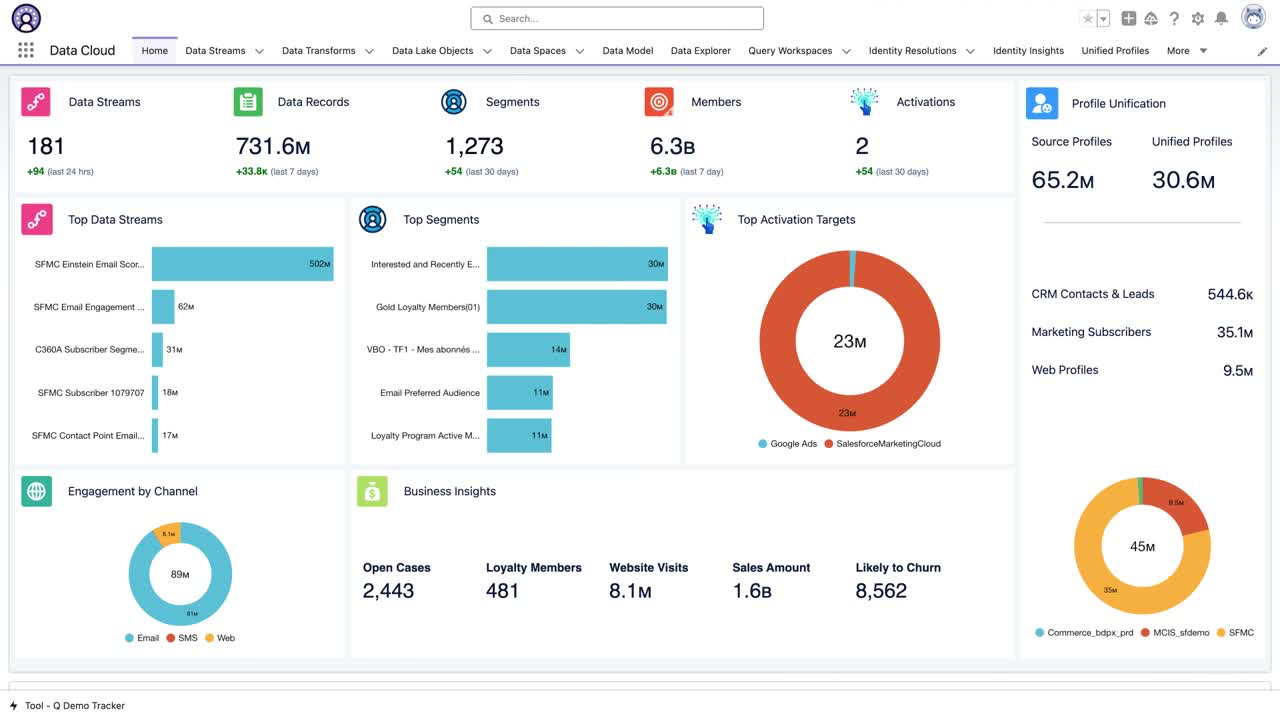
Salesforce Data Cloud serves as the unified customer data foundation for the entire Salesforce platform, connecting Sales Cloud, Marketing Cloud, Service Cloud, and Commerce Cloud with real-time customer profiles. The platform excels at breaking down silos between sales, marketing, and service teams through native data sharing and automated workflows.
Each tier includes identity resolution, real-time segmentation, and cross-cloud activation capabilities. Advanced plans add AI-powered insights, predictive modeling, and Einstein recommendations. The platform handles both B2B and B2C use cases with industry-specific data models and compliance features.
What We Like
- Seamless ecosystem integration: Native connectivity across all Salesforce clouds eliminates data silos and enables unified customer experiences without complex integrations
- Real-time activation capabilities: Instant profile updates trigger personalized experiences across sales, marketing, and service touchpoints as customers interact with your brand
- Advanced identity resolution: Sophisticated matching algorithms connect customer interactions across devices, channels, and time periods with high accuracy
- Industry-specific solutions: Pre-built data models for financial services, healthcare, retail, and manufacturing accelerate implementation and ensure compliance
- Einstein AI integration: Built-in artificial intelligence provides predictive insights, next-best-action recommendations, and automated personalization at scale
What to Know
Salesforce Data Cloud requires existing Salesforce licenses for full value, making it expensive for organizations not already invested in the ecosystem. The platform's complexity can overwhelm smaller marketing teams without dedicated administrators. Implementation typically requires Salesforce consulting partners for optimal configuration.
Cost
Data Cloud uses a flexible, consumption-based pricing model, so you only pay for what you use. Most costs come from Consumption Credits, which can be used across Data Cloud for actions like ingesting data, unifying profiles, and creating segments. Data Cloud also charges separately for data storage and offers premium add-ons. Additional costs apply for Einstein AI features, advanced analytics, and increased data volume limits. For specific numbers, talk to Salesforce’s sales team today.
Adobe Real-Time CDP - Best for enterprise customer experience
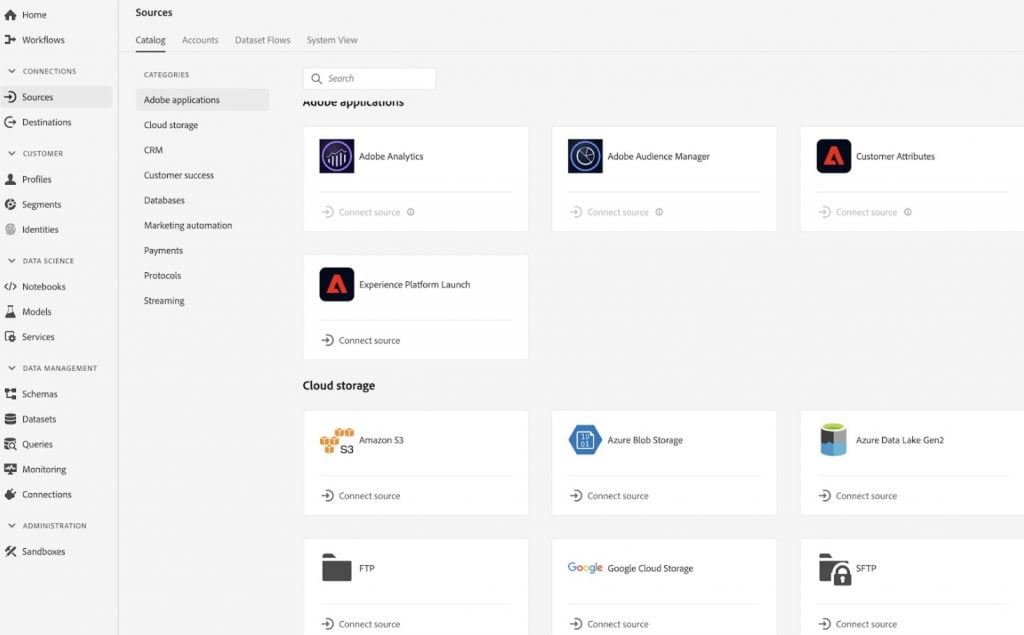
Adobe’s Experience Platform crossed the billion-dollar threshold, making it the leading choice for large enterprises prioritizing comprehensive customer experience management.[*] The platform combines data unification, advanced analytics, and AI-driven personalization across Adobe's marketing suite.
Real-time profile updates enable instant personalization while sophisticated audience management powers cross-channel campaigns. The platform includes journey orchestration, content optimization, and attribution modeling capabilities. Enterprise features include advanced governance, compliance tools, and dedicated support.
What We Like
- Real-time personalization engine: Instant profile updates trigger personalized content, offers, and experiences across web, mobile, email, and advertising channels
- Advanced audience management: Create complex segments using behavioral data, predictive scores, and lookalike modeling for precise targeting
- Journey orchestration capabilities: Design and automate customer journeys across multiple touchpoints with sophisticated trigger logic and timing controls
- Enterprise-grade governance: Comprehensive data lineage, access controls, and compliance features meet strict regulatory requirements
- Adobe ecosystem integration: Native connectivity with Creative Cloud, Analytics, and Advertising platforms creates seamless workflow for marketing teams
What to Know
Adobe Real-Time CDP requires significant investment in training and change management due to platform complexity. The solution works best for organizations already using Adobe marketing tools. Smaller businesses may find the feature set overwhelming and expensive for their needs.
Cost
Adobe Real-Time CDP pricing is available through their sales team. Consumers report they start around $50,000 annually for mid-market deployments, with enterprise contracts often exceeding $200,000 per year. Costs vary based on data volume, number of profiles, and activated destinations. Professional services for implementation typically add 20-40% to total investment.
Twilio Segment - Best for developer-friendly implementation
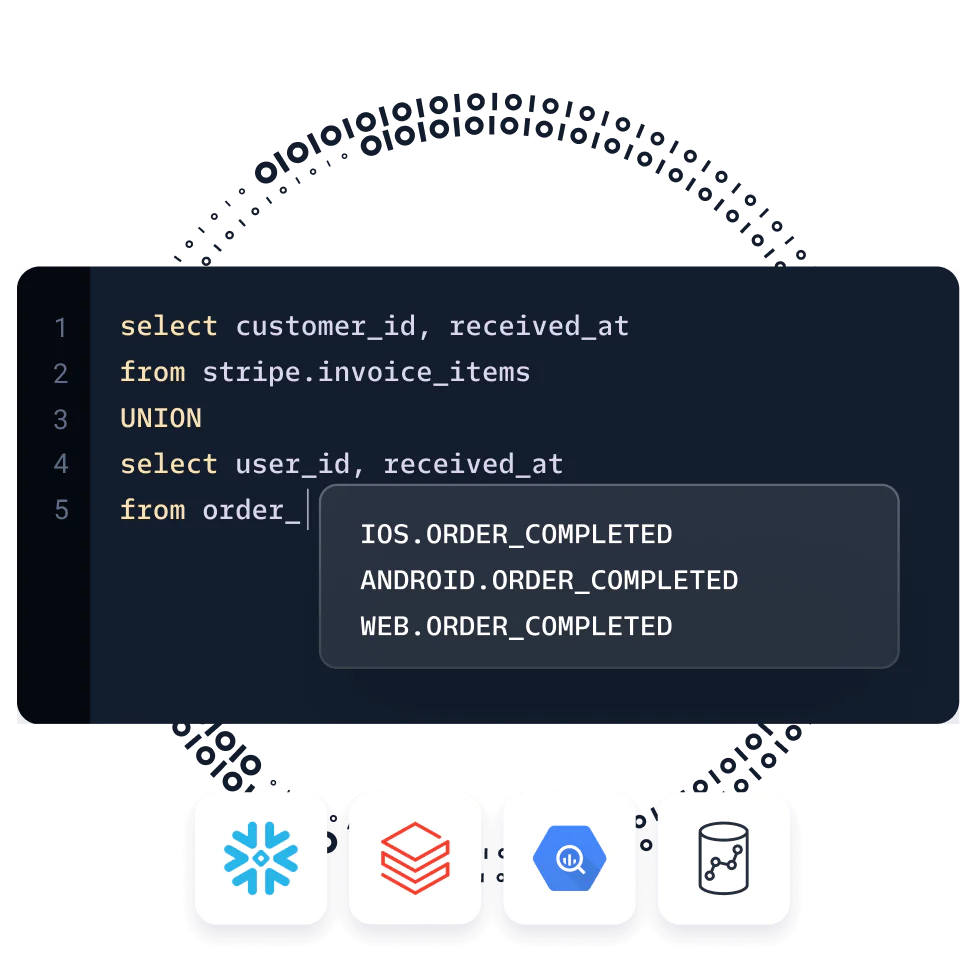
Twilio Segment provides developer-friendly APIs and the most extensive integration library in the CDP market, making it popular with technology-forward marketing teams. The platform specializes in data collection and activation across hundreds of marketing tools and platforms.
Each plan includes real-time data streaming, identity resolution, and audience management capabilities. Advanced tiers add predictive traits, reverse ETL functionality, and enterprise governance features. The platform supports both customer-facing applications and internal analytics use cases.
What We Like
- Extensive integration ecosystem: Over 450 pre-built integrations with marketing tools, analytics platforms, and business applications reduce implementation complexity
- Developer-friendly architecture: Clean APIs, comprehensive documentation, and flexible data models appeal to technical teams building custom solutions
- Real-time data streaming: Sub-second data processing enables immediate personalization and campaign triggers across all connected tools
- Flexible data governance: Granular controls over data collection, transformation, and activation ensure compliance while maintaining marketing effectiveness
- Scalable infrastructure: Cloud-native architecture handles billions of events monthly without performance degradation or data loss
What to Know
Segment requires technical expertise for optimal implementation and ongoing management. The platform's flexibility can lead to data inconsistencies without proper governance. Some advanced features require additional engineering resources to implement effectively.
Cost
Twilio Segment offers a free tier for up to 1,000 monthly tracked users, with paid plans starting at $120 per month. Enterprise pricing begins around $2,000 monthly and scales based on data volume and activated destinations. Usage-based pricing can become expensive for high-volume applications.
Analytics CDPs
Analytics CDPs prioritize deep customer insights and advanced reporting capabilities, transforming unified customer data into actionable business intelligence. These platforms excel at uncovering behavioral patterns, measuring campaign effectiveness, and providing the strategic insights needed for data-driven decision making.
Snowflake - Best for data warehouse integration
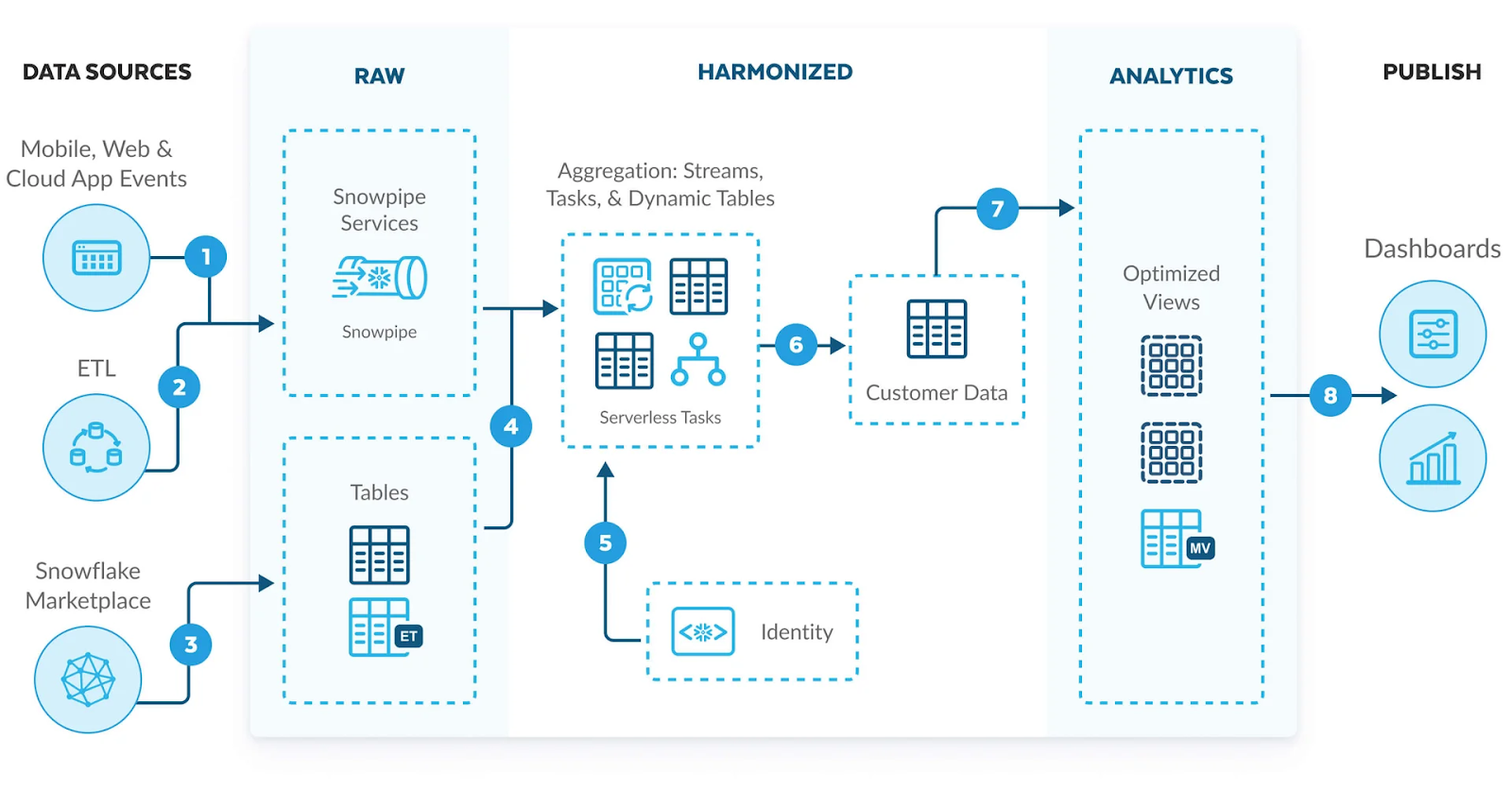
Snowflake's data cloud architecture provides unlimited scalability and native data warehouse integration for organizations prioritizing flexible data analytics. Technical teams appreciate the SQL-based interface and complete control over custom data models and transformations.
The platform excels at handling massive data volumes and complex customer analytics while maintaining query performance. Each deployment includes data governance tools, role-based access controls, and comprehensive audit capabilities. Advanced features include machine learning integrations and real-time streaming analytics.
What We Like
- Native data warehouse integration: Eliminates data movement costs and latency by operating directly within Snowflake's infrastructure
- Unlimited scalability: Cloud-native architecture scales automatically to handle billions of customer records without performance degradation
- SQL-based flexibility: Data analysts and engineers can create custom models, transformations, and analytics using familiar SQL interfaces
- Enterprise data governance: Comprehensive access controls, data lineage tracking, and audit capabilities meet strict compliance requirements
- Cost-effective storage: Snowflake's consumption-based pricing model reduces costs compared to traditional CDP licensing structures
What to Know
Snowflake requires technical expertise for implementation and management. The platform lacks pre-built marketing activation tools, requiring custom development or third-party integrations. SQL knowledge is essential for effective platform utilization.
Cost
Snowflake's consumption model typically starts around $2,000 monthly for small deployments. Costs scale based on compute usage, data storage, and data transfer volumes with different tiers available via credits. Large enterprise deployments often exceed $20,000 monthly depending on usage patterns. For more information, contact sales.
Google Analytics 360 - Best for Google ecosystem integration
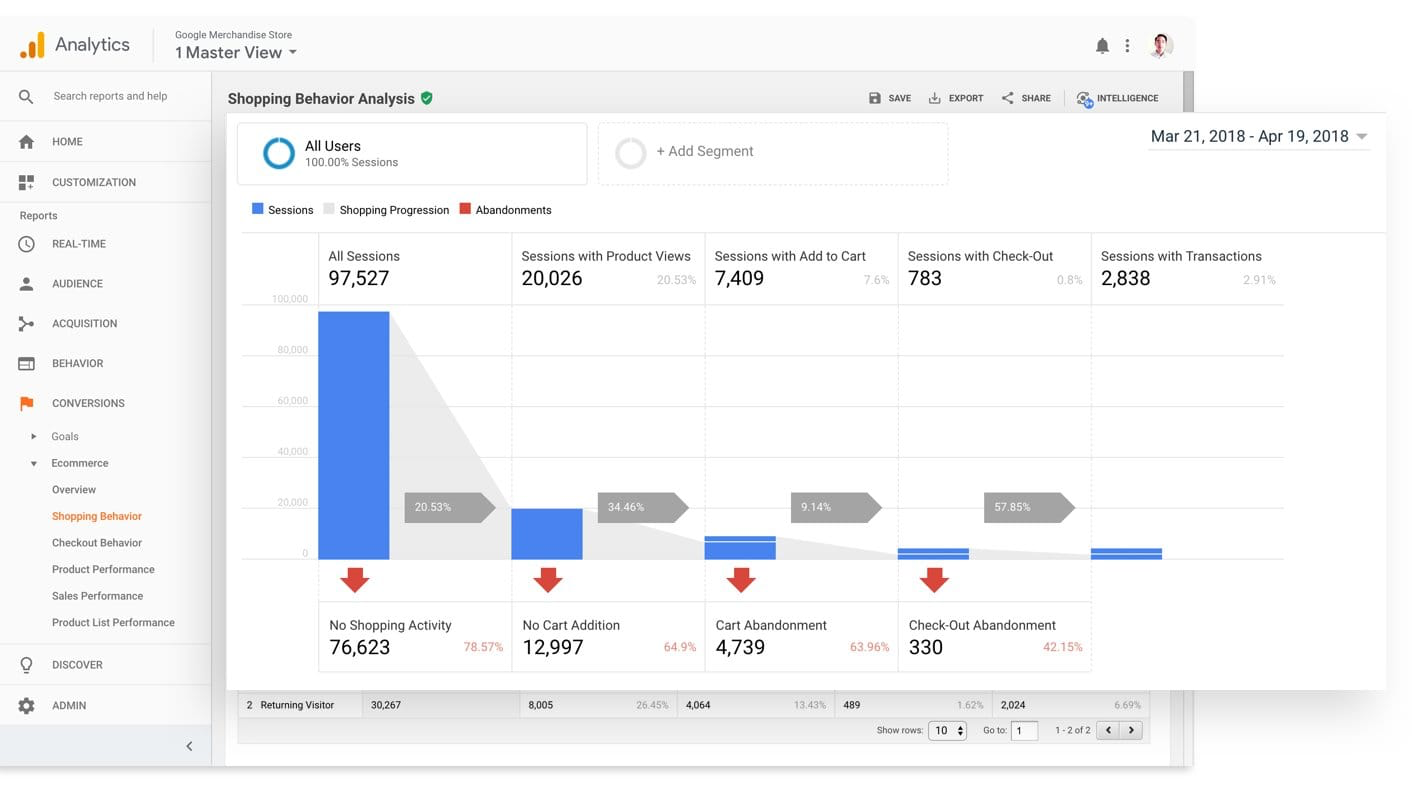
Google Analytics 360 includes CDP-like features for customer journey analysis and audience creation with deep integration across Google's advertising and marketing ecosystem. The platform combines web analytics, customer data management, and advertising activation in a unified interface.
Advanced features include cross-device tracking, custom dimensions, and audience segments that activate directly in Google Ads, Display & Video 360, and Search Ads 360. The platform provides attribution modeling, conversion path analysis, and predictive audiences for enhanced marketing performance.
What We Like
- Seamless Google integration: Native connectivity with Google Ads, YouTube, and other Google marketing platforms eliminates data silos
- Advanced attribution modeling: Sophisticated attribution analysis reveals the true impact of marketing touchpoints across the customer journey
- Predictive audience capabilities: Machine learning algorithms identify high-value prospects and customers likely to convert or churn
- Enterprise reporting features: Custom dashboards, automated insights, and data studio integration provide comprehensive analytics capabilities
- Familiar interface: Marketing teams already using Google Analytics can leverage existing knowledge and workflows
What to Know
Google Analytics 360 works best for organizations heavily invested in Google's marketing technologies. The platform's CDP capabilities are limited compared to dedicated solutions. Data export options are restricted, creating potential vendor lock-in concerns.
Cost
Google Analytics 360 pricing is available upon talking to the sales team for a precise number. They operate on a usage-based model with the key variable being how much data you plan to collect and process. Google says the most simple configuration will start at about $50,000 a year entitling customers to 25 million events per month, but costs increase variably and again require talking with the sales team.
Vertical CDPs
Vertical CDPs are purpose-built for specific industries, offering pre-configured data models, compliance features, and workflows tailored to unique sector requirements. These platforms understand the nuances of healthcare, financial services, retail, or manufacturing better than generic solutions.
Amperity - Best for retail and consumer brands
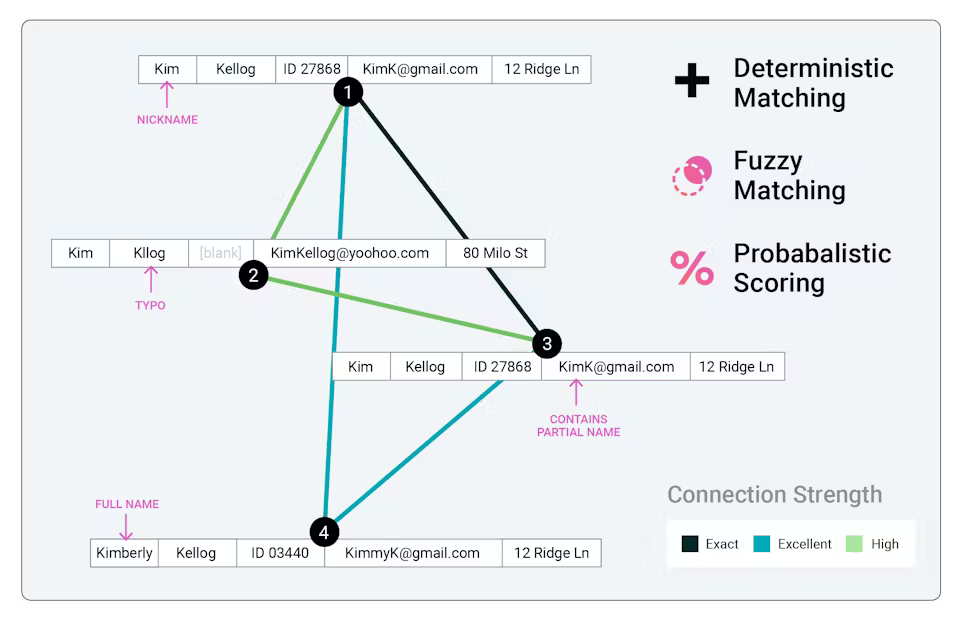
Specifically designed for retail and consumer brands, Amperity focuses on identity resolution across online and offline customer interactions with advanced machine learning capabilities. The platform handles complex retail data challenges including loyalty program integration, inventory-driven personalization, and omnichannel customer journeys.
Advanced algorithms identify customer lifecycle stages and predict purchase behaviors specific to retail environments. The platform includes pre-built retail analytics, campaign templates, and inventory management integrations. Features include customer lifetime value modeling, churn prediction, and personalized product recommendations.
What We Like
- Retail-specific identity resolution: Sophisticated algorithms connect customers across loyalty programs, email addresses, credit cards, and mobile apps
- Omnichannel customer journeys: Track customer interactions from online browsing through in-store purchases and returns for complete retail visibility
- Predictive retail analytics: Machine learning models predict customer lifetime value, optimal communication frequency, and product affinity scores
- Inventory-driven personalization: Integrate real-time inventory data to personalize recommendations and prevent promoting out-of-stock items
- Pre-built retail templates: Industry-specific segments, campaigns, and analytics accelerate implementation for retail use cases
What to Know
Amperity's retail focus limits applicability for other industries and requires significant data quality investment for optimal identity resolution. The platform's complexity demands dedicated data and analytics resources for management. Implementation timelines often extend 6-9 months for full deployment.
Cost
Amperity pricing is unique in that they offer a usage-based pricing model that allows you to pay just for the features you use while having full access to the platform and no upfront commitments. Dashboards will provide a way to see and manage costs and discounts are available upon usage commitments. However, starting costs and specific pricing are not available on the site, you will need to contact sales to start.
Treasure Data - Best for enterprise compliance
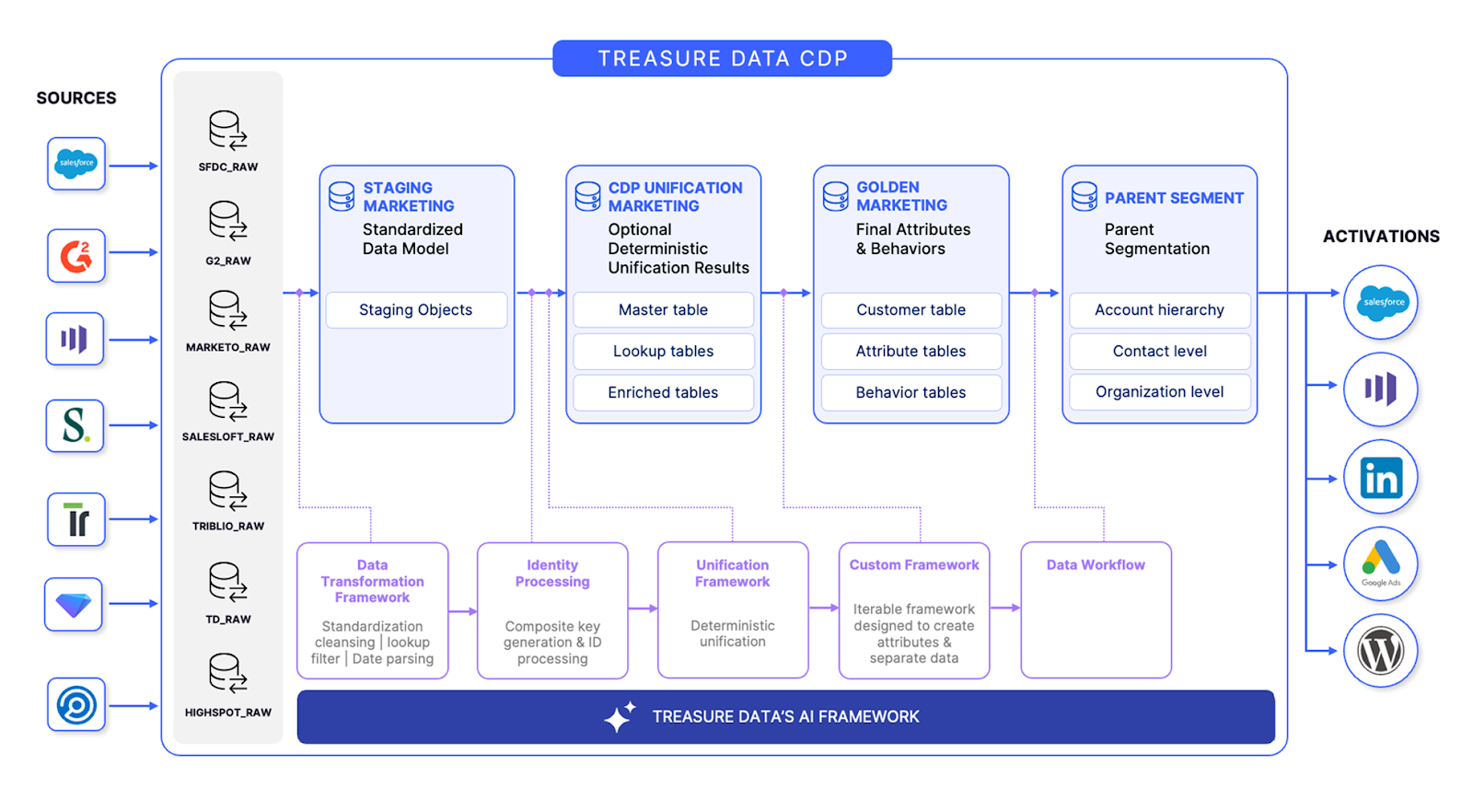
Positioned for large enterprise deployments, Treasure Data offers robust data governance and compliance features required by regulated industries. The platform handles complex data integration scenarios with enterprise-grade security controls and comprehensive audit capabilities.
Machine learning capabilities focus on customer lifetime value optimization and churn prevention at enterprise scale. The platform includes advanced privacy controls, data lineage tracking, and role-based access management. Professional services support helps large organizations navigate implementation and change management challenges.
What We Like
- Enterprise-grade compliance: Comprehensive GDPR, CCPA, and HIPAA compliance features with detailed audit trails and data lineage tracking
- Advanced data governance: Role-based access controls, data classification, and automated privacy controls meet strict regulatory requirements
- Global deployment options: Multi-region data processing and storage options support international privacy and sovereignty requirements
- Professional services support: Dedicated implementation teams help large organizations navigate complex technical and organizational challenges
- Scalable infrastructure: Platform handles billions of customer interactions and terabytes of data without performance degradation
What to Know
Treasure Data requires significant investment in training and change management due to enterprise complexity. The platform works best for large organizations with dedicated data teams and substantial compliance requirements. Smaller businesses will find the solution over-engineered and expensive.
Cost
Treasure Data pricing is not listed on their site, so you will need to go and contact their sales team for a proper quote based on your size and functionality requirements. Pricing includes data processing, storage, advanced analytics, and professional services. Additional costs apply for premium support and specialized industry features.
CDP Use Cases by Industry
A wide range of industries will use CDPs to juice up the way they address their customers’ specific needs and challenges when it comes to engagement. In doing so, CDPs also account for the regulatory requirements of each one.
Retail and E-commerce

Unified views of the ways your customer base manages their business with you on both the online and offline fronts are key to making sure you cover the whole customer journey. This often begins when they do their digital research, then eventually visit your stores to purchase their wares.
Things like abandoned cart recovery can cross through devices and even give personalized recommendations for out-of-stock item replacements. Meanwhile, features like protective inventory allow customers' habits to help you optimize stock levels.
Financial Services
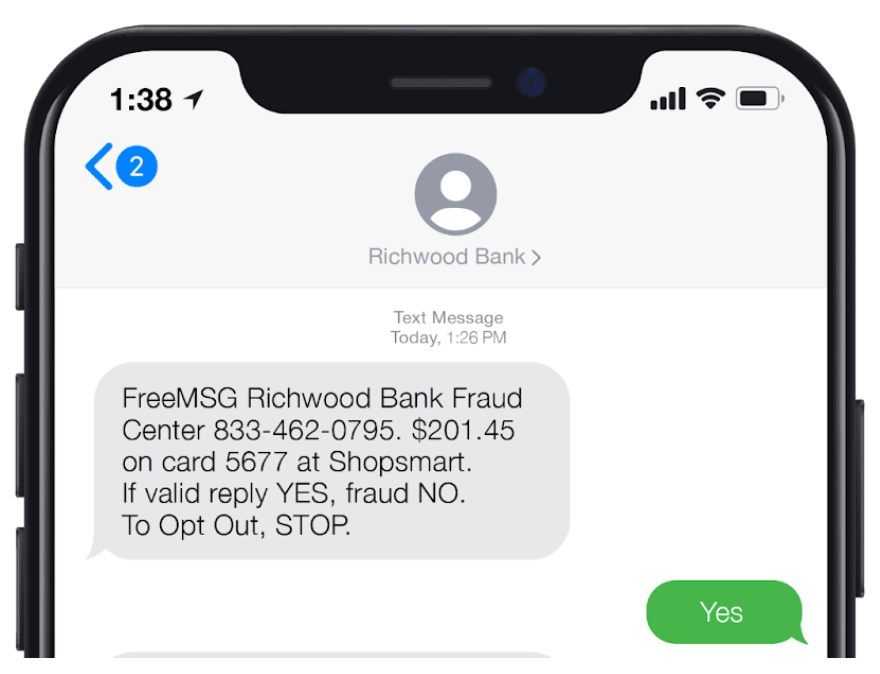
Risk scoring reaches new levels as you can find ways to incorporate behavioral data to supplement traditional credit assessments while working to cut down on fraud through a comprehensive scrub of how your customers spend (locations, timing, and payment methods).
Personalized product recommendations will take advantage of their transaction history and life stage indicators to ensure you’re providing proactive service suggestions like home and car loan rates that match your customers’ needs.
Healthcare
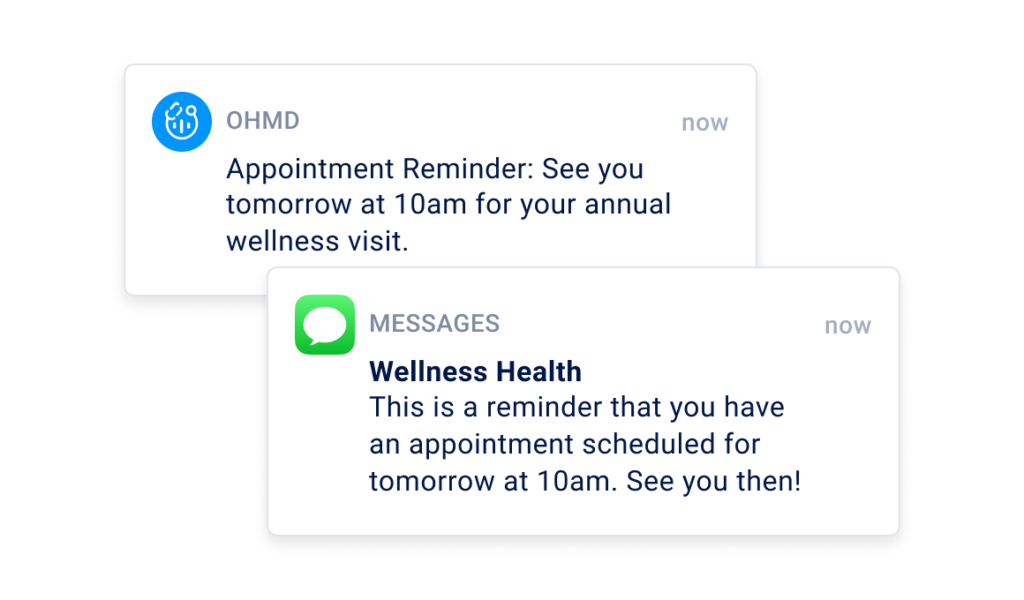
Patient journey optimization is a must-have when it comes to finding ways to coordinate care across appointments and the ways customers want to be reached about their impending care. Personalized appointment reminders ensure patients are aware of their upcoming care visits, while care gaps are addressed using clinical data with existing engagement patterns without violating HIPAA compliance requirements.
Travel and Hospitality
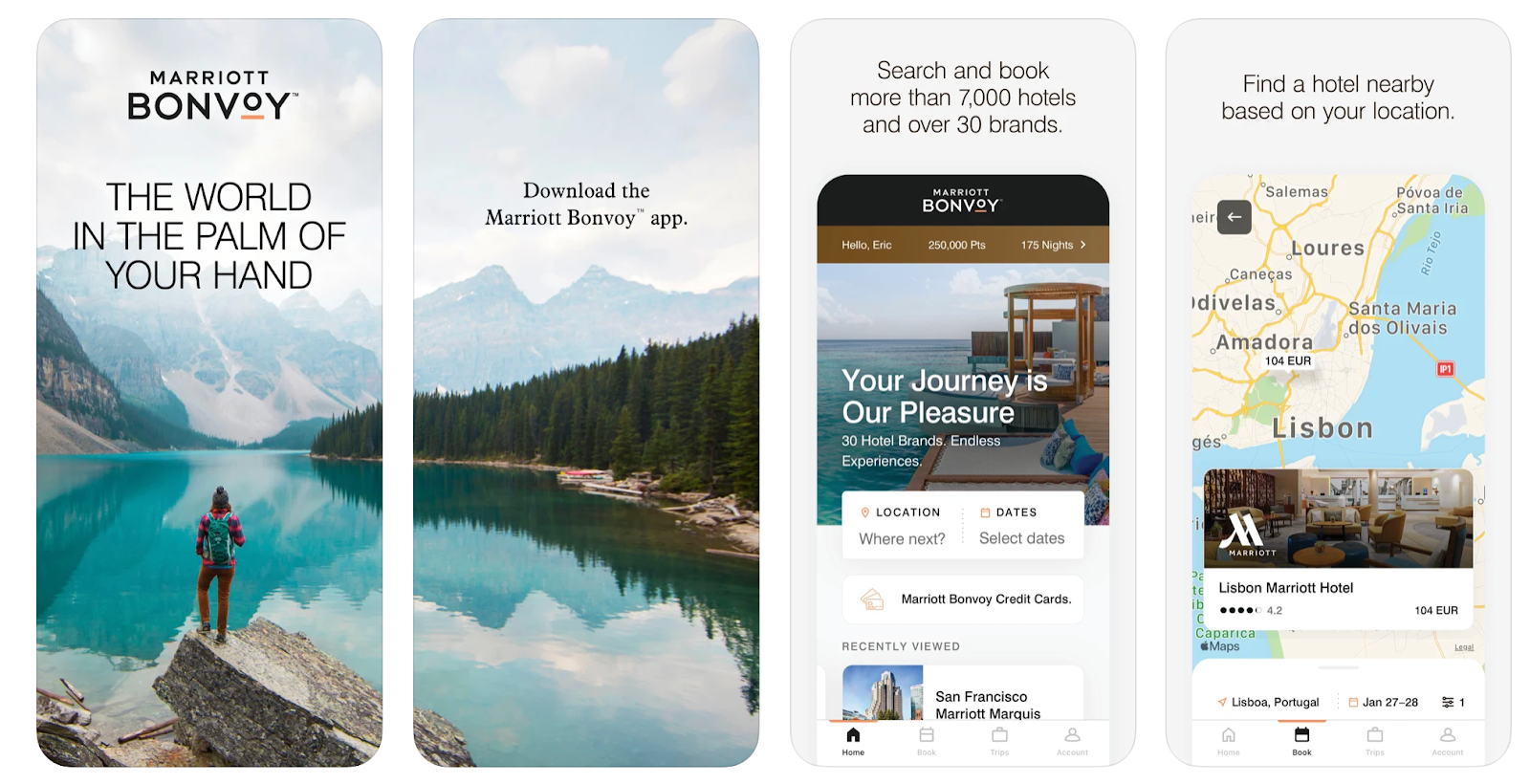
Guest preference management is a good way to leverage your CDP to create these profiles that form thoughtful and personalized stays via booking history and the ways service interactions have happened. Dynamic pricing optimization and loyalty program personalization are ways to boost engagement and sales via relevant offerings and perhaps exclusive experiences.
Final Takeaways Before Choosing a CDP
A CDP is your journey’s clearest path to unifying data from customers to transform the way they conduct business with you from something transactional to something more strategic. CDPs will defragment limitations in your personalization abilities, streamline customer insights, and create sustainable growth for all your customer-facing functionalities.
Think about the problems your business faces rather than the features wishlist when you look for a CDP. Your best solution is one that takes account of your specific challenges while accounting for existing tech investments and the realities of your organizational capabilities today, rather than having bells and whistles.
Your implementation schedule needs to occur in phases to properly build up and scale long-term. Phased rollouts are the best way to ensure you get those early wins to form organizational confidence and familiarity to secure a budget for eventual expansion. Your end goal is creating tools for data maturity and team capabilities to evolve and to create room for AI-driven optimization.
FAQs
CDPs collect first-party data from all digital and offline touchpoints including websites, mobile apps, email, social media, POS systems, and IoT devices.
CDPs complement existing systems by unifying all customer data, including anonymous interactions that CRMs and marketing automation platforms cannot capture.
Basic implementation takes 3-6 months, while full deployment with advanced AI features requires 12-18 months depending on data complexity.
Marketing, IT, legal, and executive leadership must collaborate, with input from data analysts, customer service, and sales teams.
Avoid vendors lacking real-time processing, transparent pricing, or requiring extensive custom development for basic features.